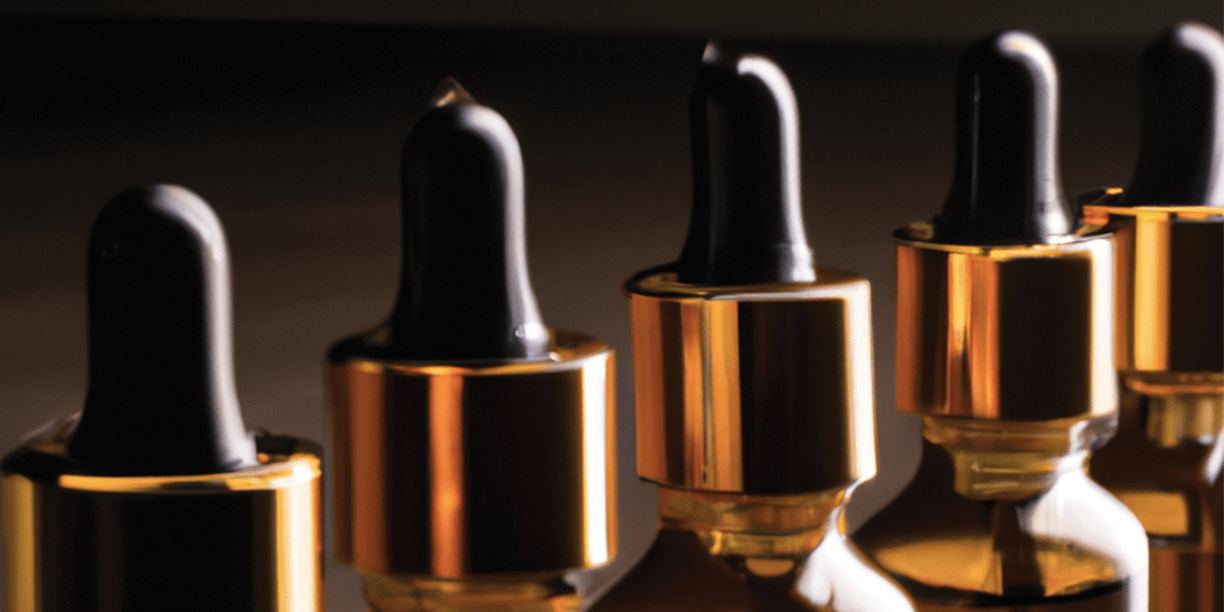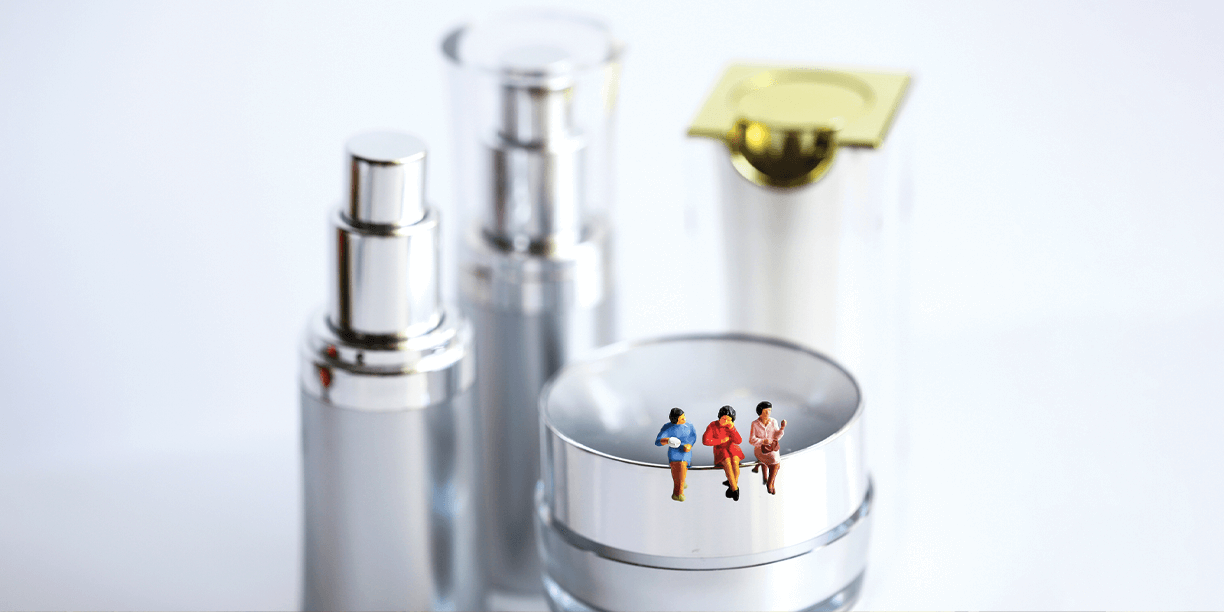Get ready for an era of ingredients, technologies, and formats that will challenge the way we care about beauty.
While it may be difficult to envision a post-pandemic consumer market, the beauty and personal care industry is poised to experience a surge of growth and innovation not seen in some time. The story is unfolding much like it began, with inventory levels normalizing and our social activities resuming. We’re now able to interact face to face with our coworkers again, even if it’s only a few days a week.
We’re discovering new ingredients and novel processes for extracting them, expanding the range of textures we can formulate and the diversity of individuals we formulate for. Moreover, we’re making significant strides in delivering active ingredients more effectively.
Over the next decade, we’ll witness the emergence of new approaches to product development, sustainability, and innovations from every direction.
Zits to Gums: Inflammation Is Everywhere
As researchers delve deeper into the science behind our skin, they are uncovering more about what can either enhance or hinder the overall effectiveness of our products. We typically associate the term “inflammation” with joint pain, but overlook the fact that inflammation also plays a significant role in our skin, hair, and oral health. Even the most subtle inflammation can serve as the catalyst for various skin conditions.
Acne, breakouts, and blemishes provide a prime example of this concept. We’ve long understood that clogged pores are at the root of acne, and proper cleansing and toning regimens can help alleviate these issues. However, the efficacy of skincare products depends not only on their ingredients but also on their ability to maintain their effectiveness over time. When inflammation is present, our pores become further reduced, leading to increased sensitivity to breakouts and further inflammation.
In fact, the overall toxicity and pollution we encounter in our environment often contribute to chronic inflammation. Blue lights, UV lights, particulate matter, parabens, and phthalates are ubiquitous elements in our surroundings. Our exposure to these elements leads to inflammation throughout our bodies, exacerbating existing conditions.
In this arena, potent ingredient combinations can help address topical concerns while reducing inflammation. These combinations often feature at least one active ingredient, such as ginger + allantoin to soothe gums, sea kelp + açai extract for brightening face washes, and lanolin + turmeric root extract for overnight moisturizers.


Beauty Cultures: The Biofermentation Boom
One of the most generative advances in beauty care has come through the process of biofermentation. The same scientific principles behind brewing can help the beauty care industry develop more effective ingredients, reduce the footprint of chemical manufacturing, and help companies meet corporate-level ESG initiatives.
In this process, microorganisms like bacteria and fungi feast off of a substrate, converting the byproduct into useful ingredients like sea kelp extract and glycolic acid. It has advantages up and down the sustainability ladder, like allowing manufacturers the ability to create new natural alternatives to cheap synthetics, or reducing waste and byproducts during extraction. Moreover, these processes contribute to clean and sustainable certifications.
Anything You Can Do, We Can Do Better
Two heads are better than one, so it’s natural to want our products to do more than just their core function. For instance, refrigerators that can browse the internet or, perhaps more relevantly, a daily moisturizer that doubles as a light foundation.
Traditionally, this duality has fallen to dual-purpose products like shampoo/conditioner, toner/cleanser, or moisturizer/foundation. However, innovation in this area is shifting towards a duality of approach and function.

Exfoliation provides a clear example of duality in approach. By encapsulating alpha hydroxy acids into beads, like Cobalt Labs’ Revive formulation, two stages of exfoliation are provided. First, the beads provide physical exfoliation, followed by an AHA-based chemical scrub.
Innovation can also reinforce brand experience or even provide sensory feedback. Imagine a hand cleanser that changes color as the product is worked through, or a face mask designed to measure the intensity to which a product has been applied.
Beauty in Small Doses
Understanding the benefits of microdosing is bringing new innovation to the problems we’re able to solve, and broadening the reach of customers who can use these products. By combining smaller doses of actives, formulations can bring synergies together in ways that wouldn’t be as effective individually. Lowering the amount of actives also allows for catering to various sensitivity types, or aftermarket customization of regimens.
This aligns with the Educated Consumer—a new breed of shopper born out of the pandemic who prioritizes researching what goes into their brands. Of the consumers who research before purchasing, 54% do so to understand the efficacy of the ingredients within.
This type of consumer exists in every demographic, presenting ample market opportunities for companies to customize their brands. A more clinically centric brand might find value in horizontal SKU expansion with a variety of active percentages to onboard and upsell customers. A strategic masstige brand, on the other hand, can capitalize on aftermarket “add-ons” in the form of boosters or activators.


A Brand for Every Type
In the past, beauty care has primarily focused on inclusivity in terms of skin tone and body type. However, the true innovation lies in expanding into a new platform of diversity that takes into account the connections between mind, body, and spirit. As personal care continues to evolve beyond purely cosmetic concerns, formulas are being developed to cater to this new market.
Brands are going genderless and gender-specific, products for everyone and only you, and defining ageless as covering every age. These shifts in brand strategy aren’t exclusively based on marketing angles—they are real consumer intent to reward brands that are authentically diverse.
Diversity can bring innovative changes and inherent growth for companies, but there are logistical risks. A single brand isn’t capable of catering to every demographic at once, so it’s important to align on the best way to diversify. Some brands will be better poised to expand across value, masstige, and prestige tiers, while other brands will be better suited to extend their offering through additional hero active ingredients.
Unflappable Innovation
The beauty and personal care industry is no stranger to cyclical shifts, with consumer demand and product trends in a constant state of flux. However, the recent introspective period we’ve all experienced has given rise to a new wave of innovation that is set to transform the industry over the next decade.
From AI-powered skincare systems to plant-based hair dyes, the future of beauty and personal care is poised to be more diverse, creative, and forward-thinking than ever before. This surge of innovation is not just a means of self-expression but also a tool for self-care and empowerment.
As we move towards a more inclusive and sustainable future, the beauty and personal care industry is set to play a key role in shaping the way we express and care for ourselves.